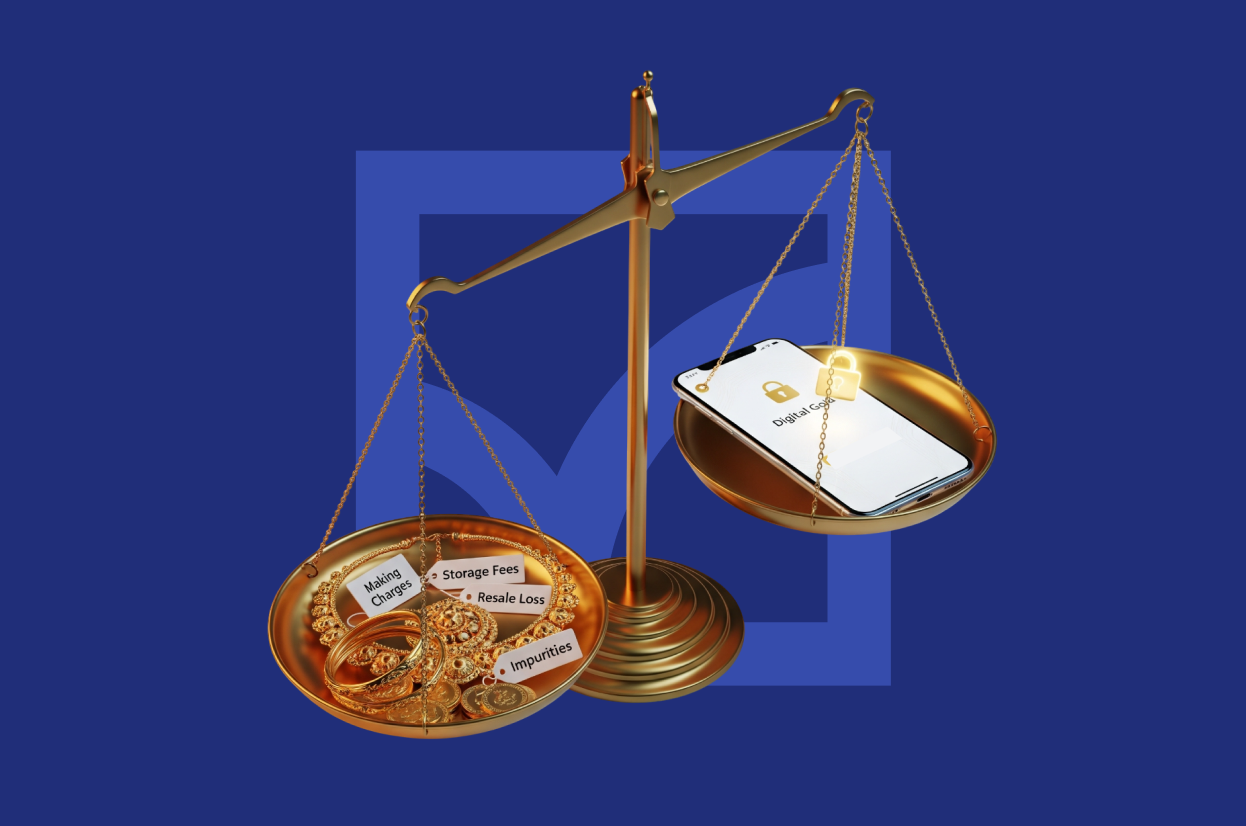Physical gold jewellery, coins, or bars has emotional and cultural importance in India. Yet, beneath its shine, it carries hidden expenses like making charges, storage fees, and resale losses. Digital gold, on the other hand, removes many of these hidden costs while offering modern flexibility.
1. Jewellery Making Charges & Wastage
- Buying gold jewellery involves paying substantial making charges, typically 20–30% of its value.
- These charges benefit craftsmanship not the gold content, impacting investment returns.
Digital gold, however, sells pure 24K gold without any making or wastage charges, so your full investment goes toward owning real gold.
2. Storage, Insurance & Safety
- Physical gold demands secure storage home safes, rented lockers, or bank vaults often incurring recurring storage fees or insurance costs.
- There’s also the risk of theft, loss, or damage if not properly stored.
Digital gold is held by trusted custodians in insured vaults at no extra charge, eliminating storage hassles and security risks.
3. Resale Value & Liquidity
- When you sell physical gold, jewellers discount its value due to impurities, making charges, and resale markdowns, significantly reducing returns.
- Liquidity is limited finding buyers or credible dealers takes time.
In contrast, digital gold can be bought or sold instantly online, often with proceeds settled directly to your bank account, reflecting real-time gold rates.
4. Transparency & Purity
- Physical jewellery purity can vary; hallmarking matters but still may lead to doubts or impurities.
- You pay for alloyed metal, not always full gold.
Digital gold guarantees 99.9% purity and consistent pricing nationwide. You pay a small premium, plus 3% GST, but there is no hidden markup or impurity risk.
5. Minimum Investment Barrier
- Physical gold usually comes in fixed weights (e.g., 10 g), implying a high entry cost.
- This may exclude new or small investors.
Digital gold platforms permit investments starting as low as ₹10, letting users accumulate gold gradually over time.
6. Taxation & Additional Fees
- Both physical and digital gold purchases attract 3% GST upfront, which you cannot recover upon resale.
- Digital gold platforms may also levy small platform or conversion fees, and storage charges after a certain period (e.g. 0.3–0.4% annual after 5 years).
Still, overall costs remain lower than physical gold when considering making charges, storage, and resale markdowns.
Final Thoughts
If your goals are focused on investment efficiency, liquidity, lower costs, and purity assurance, digital gold outperforms physical gold, especially for short- to mid-term savings. It removes many of the hidden charges tied to traditional gold ownership, offering a modern, app-based way to buy, hold, and sell gold with minimal hassle.
That said, if emotional value, jewellery use, or heirloom traditions matter to you, physical gold still holds cultural significance. But from a purely financial standpoint, digital gold is often the smarter and more efficient choice.
At InCred Money, we help you explore such smarter investment options with full transparency and credible platforms whether you’re starting small or planning to diversify your gold portfolio. Ready to invest in gold, the digital way?
Ready to go for gold? Start your digital gold journey today on InCred Money.
Sources




